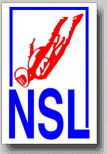
National
Skydiving
League
226 Pecan Street
Deland FL 32724
tel: (386) 801-0804
© 2003 - 2025
All Rights Reserved


226 Pecan Street
Deland FL 32724
tel: (386) 801-0804
© 2003 - 2025
All Rights Reserved


The NSL News published several articles last year, written by John Hart, where he forwards his own experiences and expertise to the general public. His efforts were also helpful to prepare teams and potential competitors for the new skydiving season.
The Start Skydiving newsletter once again provided valuable hints and tips this year. The latest information covered a more sophisticated area of 4-way competition: the engineering of the drawn sequences and different continuity plans. The MESL teams have the opportunity this weekend to apply some of the instructions.

Continuity Plans & Engineering
Since the early days of competitive Formation Skydiving, a crucial part of planning a successful skydive has been the engineering stage. Sometimes building a formation a different way may be slightly more efficient than building it the way you built it last time. Over the course of many jumps, a team's scores will be noticeably higher if they keep to a small set (one to three) of builds for each formation. The speed and reliability achieved through familiarity easily exceed the gains achieved by finding a new build which involves a little less turning, or a little less translation, in a particular situation.

- A set of random builds
- A plan for handling non-repeater blocks
The type of plane a team typically uses affects the way it builds every formation. Left-door planes such as Twin Otters, common in the USA, result in a left-handed continuity plan. Many European teams that mostly use Porters use right-handed continuity plans.
The exit has another effect on all the builds, both randoms and the initial build of blocks. Most continuity plans select a primary (or "A") build which corresponds to the preferred exit. This way a team does not have to learn two different builds for exit and terminal. There are exceptions, particularly blocks where the preferred terminal engineering does not provide an easy exit. In these cases, some teams choose a "fire and forget" exit, where they exit a formation one way and perform it another way for the rest of the skydive.

Non-Repeaters: A major element of continuity plans for the AAA/Advanced/Open Class dive pool is the handling of non-repeater sequences, also known as slot-switchers and mirrors. Some blocks result in one pair of piece partners being switched, relative to the other pair. These are called slot switchers, and as of this writing include blocks 3, 10, 12, and 16. Some blocks result in both pairs being switched. These are usually called mirrors, and as of this writing, include Block 5 and Block 17.
Two continuity plans see common use in modern 4-way:
- Front pair with mirrors
- Mirrorless

The mirrorless plan simplifies engineering significantly. Again, the front pair take the memory in the slot switchers, but when a mirror comes up, both pairs switch slots - the Center Inside becomes the Tail, and vice versa. So there are no mirrored configurations to learn; everybody learns their piece partner's slot. When a slot switcher and a mirror are in the same dive, the back pair has a two-page slot-switching sequence, and the front pair has only a one-page sequence. The only teams for whom this plan is inappropriate are ones where the centers have a significantly higher fall rate than the long axis jumpers. In this case, putting both Point and Tail in the center can result in their teammates struggling with the fall rate and even going low.

A popular means of dealing with exiting slot-switcher blocks is to exit them in switched configuration. This way, when the hill block completes, all jumpers are in their home slots. Then the first page is in A slot, and the dive will always include at least as many A-slot pages as B-slot, making the maximum use of job familiarity.
Some less popular continuity plans include:
- Front and back pair with mirrors
- Center or outside solutions

In a center solution, a mirror is handled by having the Center Inside and the Center Outside switch slots. An outside solution switches the Point and Tail. This plan involves numerous complications and few perceptible benefits.
Remember on Saturday, June 20th, we will be hosting Meet 2 of the MESL at Start Skydiving. Skydivers of all experience levels, who are interested in doing 4-way at any level, from extremely casual, to hardcore training, and everything in between are invited to participate. If anyone has an interest in doing some 4-way this summer, feel free to contact Mike Ashley directly. We're here to serve.
Here's to a great season in 2009!